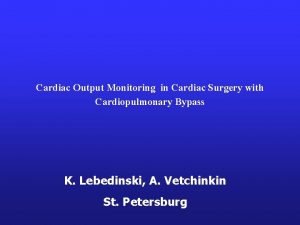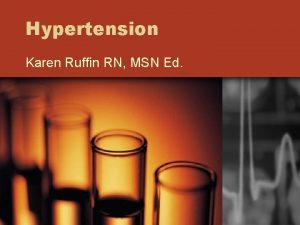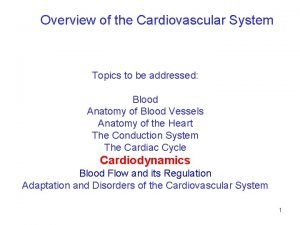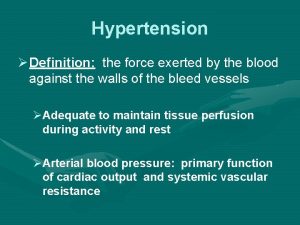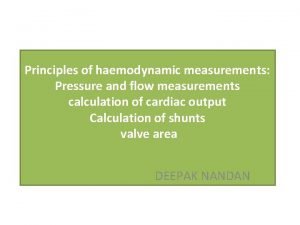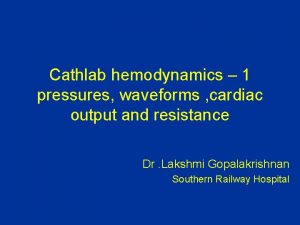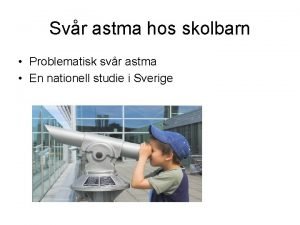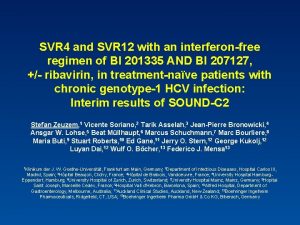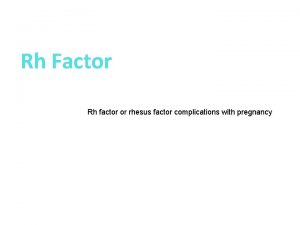RVR as a predictive factor for SVR Fried











- Slides: 11

RVR as a predictive factor for SVR Fried et. al. Shiffman et. Al. EASL 2008 -Update

Response Guided Therapy and Predictive Factors RVR c. EVR p. EVR

Distribution of early responses and corresponding SVR rates Genotype 1, PEGASYS + RBV 1000/1200 mg for 48 weeks SVR: 5% (5/111) 20% (111/569) 16% (78/90) (90/569) 22% (128/569) SVR: 87% SVR: 68% (162/240) 42% (240/569) SVR: 27% (34/128) <50 IU/ml at week 4 >50 IU/ml at week 4, <50 IU/ml at week 12 HCV RNA Response: >50 IU/ml at week 4, >50 IU/ml, but >=2. 0 log reduction at week 12 >50 IU/ml, <2. 0 log reduction at week 12 Marcellin et al, AASLD 2007, poster Studies 801 & 942; N=569

RVR as a Predictive Factor of SVR Fried et. al.

Is RVR a more important predictor for SVR than Genotype? } Methods: • Subanalysis of ACCELERATE, Fried, Hadziyannis • 1383 pts treated for 24 (G 2/3) or 48 weeks (G 1/4) with PEGASYS® 180 µg plus RBV 800 (G 2/3) or 1000/1200 mg/d (G 1/4) • Influence of genotype and other baseline predictors vs. on-treatment response by univariate and multivariate analyses Fried et al, EASL 2008, oral

Patients with RVR achieve high SVR rates irrespective of genotype SVR (%) 100 88% 100% 86% 80 60 40 20 0 n= 90 282 257 9 Geno 1 Geno 2 Geno 3 Geno 4 Patients with an RVR=HCV RNA negative (<50 IU/m. L) at week 4 Genotype 1/ 4 patients were treated for 48 weeks; Genotype 2/ 3 patients were treated for 24 weeks

RVR is the most important predictor of SVR Multiple logistic regression model for prediction of SVR (adjusted for other baseline factors) 0. 1 1. 0 10 p-value RVR vs no RVR <0. 0001 Genotype 2 vs. 1 <0. 0001 Genotype 3 vs. 1 0. 0478 Genotype 4 vs. 1 0. 0748 Age (10 years) <0. 0001 CLCr (10 m. L/min) at BL <0. 0001 ALT ratio at baseline <0. 0001 Log 10 (BL viral load) <0. 0001 BMI (kg/m 2) 0. 0185 Cirrhosis (Yes vs. No) 0. 0031 Weight (10 kg) 0. 4002 Caucasian vs. Black 0. 2558 Caucasian vs. Asian/other 0. 4184 Female vs. male 0. 8213

RVR as a Predictive Factor of SVR Shiffman et. al.

Time to HCV RNA Undetectability is a predictor for SVR in G 1 } Methods: Data from 1243 G 1 patients in 4 clinical trials treated with PEGASYS® 180 µg plus RBV 1000 -1200 mg } Results: SVR by time to HCV RNA undetectability Week 4 (n=195) 146 (75%) Week 12 (n=505) 320 (63%) Week 24 (n=194) 64 (33%) 106 (76%) 28 (74%) 4 (67%) 239 (67%) 51 (49%) 19 (73%) 40 (34%) 17 (32%) 5 (28%) 131 (75%) 15 (75%) 286 (65%) 34 (55%) 52 (33%) 12 (34%) 76 (78%) 70 (71%) 63 (72%) 257 (62%) 7 (41%) 57 (32%) All (n=1243) Race / ethnicity Caucasian Latino Black Cirrhosis classification Non-Cirrhotic Baseline HCV RNA, IU/m. L ≤ 400, 000 >400, 000 Shiffman et al, EASL 2008, poster

Conclusion and Message } Patients achieving RVR have a high probability of SVR, regardless of genotype } RVR and EVR can be used to identify patients most likely to achieve an SVR and overcome negative predictors, such as higher age and body weight } Even patients with unfavourable baseline characteristics, such as cirrhosis and older age, can achieve substantial SVR rates with PEGASYS®/COPEGUS® Fried et al, EASL 2008, oral Shiffman et al, EASL 2008, poster Bruno et al, EASL 2008, poster Reddy et al, EASL 2008, poster

